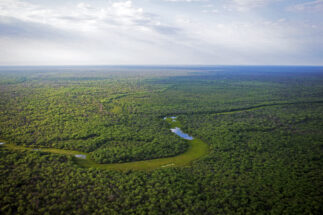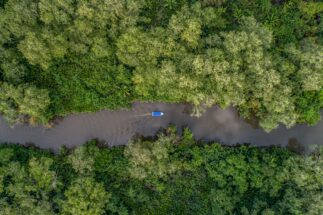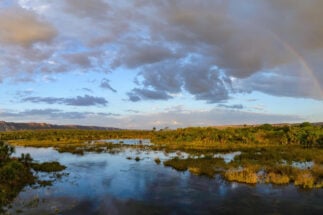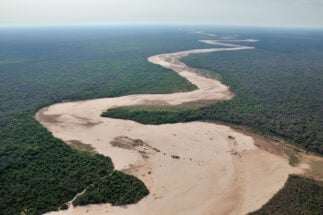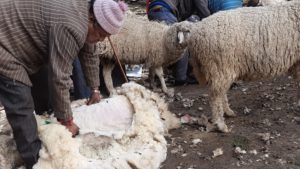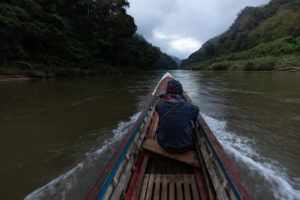Spanning Argentina, Bolivia and Paraguay, the Gran Chaco is the second largest forest in South America after the Amazon. It is a region rich in biodiversity and also accommodates soy and beef production. Yet, the expansion of commercial agriculture has driven increasing levels of deforestation in recent decades.
The Tropical Forest Alliance (TFA), a group of governments, companies and civil society organisations, recently presented a new plan, specifically for the Gran Chaco, seeking to work the entire soy and beef production chain to promote greater traceability and sustainability.
14 million hectares
The scheme has already kicked off in Argentina and Paraguay by identifying the main actors and sectoral programmes involved in the production chain, such as through the sustainable meat roundtables. Now, the challenge is to create and deliver comprehensive short- and long-term strategies.
“We are working with the common objective of improving sustainability conditions and reducing or eradicating [the] deforestation associated with production,” said Fabiola Zerbini, TFA’s director for Latin America, adding that this must be executed in a way that is not onerous, does not have a social cost and does not inhibit economic development.
For Zerbini, improving standards in soy and beef production is not only an environmental concern but also a commercial choice. Increasingly stringent environmental criteria in major global export markets are a challenge for producers. These producers, she says, need support to make the transition.
For this reason, TFA will seek to leverage the finance that producers desperately need, as it has with its other programmes in Latin America. For Zerbini, the approach to sustainability in the sector has to be “progressive and intelligent”, as well as properly planned and funded. “The cost has to be shared. A traceability programme costs money,” she adds.
Gran Chaco: New region, same vision
TFA arrived in Latin America five years ago. It took its first steps in the region in Brazil, before expanding to Colombia and Peru.
In Colombia, TFA designed and coordinated two public–private agreements between national and global actors in the palm oil and cocoa chains. Meanwhile in Brazil, it developed plans to curb deforestation in the states of Pará and Mato Grosso. In Peru, a coalition of partners is currently working on coffee and cocoa.
Colombia, Peru and Brazil hosted the so-called Cocoa Dialogues between actors from the public and private sectors, with the aim of building a sustainable cocoa brand that rewards producers by paying them a higher price.
We have political, technological and social capital in Latin America on how to do agriculture and conservation. We know how to do it. What is missing is who pays.
“We are at a time of discussing a new paradigm of global relations where the environmental issue is central. This demands changes in production. We have political, technological and social capital in Latin America on how to do agriculture and conservation. We know how to do it. What is missing is who pays,” said Zerbini.
In Paraguay and Argentina, Zerbini met dozens of farmers, whom she described as “politically and economically empowered”. While a top-down approach may have worked years ago, with policies imposed and not agreed upon by governments, it does not make sense today, she said.
“Livestock farmers need to know about sustainability. We are not just livestock breeders, we are also food producers. And this has to be created in a sustainable way,” said Carlos Pedretti, owner of the Ganadera Alborada beef company in Paraguay. “I am interested in understanding all this and helping with my efforts and those of my company.”
Gustavo Idigoras, president of the Oil Industry Chamber of the Argentine Republic (CIARA), argued that the Covid-19 pandemic has brought about a disruptive change in the way we think about food production – for the better: “We are seeing a transformation of the sector, based on environmental criteria and the circular economy.”
The Gran Chaco’s people and biodiversity
Nearly 4 million people live in the Gran Chaco, 8% of whom belong to indigenous communities that depend on the region’s biodiversity. According to the World Wildlife Fund, more than 3,400 plant species, 500 bird species, 150 mammal species and 220 reptile and amphibian species live throughout the forest’s one million square kilometres.
An estimated 25% of the Gran Chaco in Argentina’s territory has been deforested for agriculture, the majority in the last 20 years. The situation is as critical as that experienced by the Amazon rainforest. Environmental organisations fear that growing global food demand will put pressure to expand the agricultural frontier even further.
“The Argentinean producer has to see the Chaco as an opportunity and not as a problem. We have to have numbers, baselines, and that is a long way off. We need a common vision and with that we need to create something new or support what already exists,” says Daniel Kazimierski, TFA’s advisor for the Chaco programme in Argentina.
Like TFA, other international environmental organisations have also focused on the Gran Chaco in recent years, such as The Nature Conservancy and WWF. Meanwhile, the agriculture sector itself has promoted its own commitments, such as Argentina’s Carbon Neutral Programme (PACN).
We need to have numbers and baselines, but that is a long way off. We need a common vision.
The recent COP26 climate conference also recognised the importance of the Gran Chaco for forest-friendly food production. A group of financial institutions and agri-food companies such as Syngenta announced a US$3 billion commitment to support deforestation-free soy and beef production in the region, along with Brazil’s Cerrado savannah and the Amazon.
“We are encouraged to see how producers and institutions in the Chaco region are committing to innovate and design locally based solutions that contribute to adopting sustainability in their production systems,” said Felipe Carazo, head of public sector engagement at TFA, adding that he hopes the organisation can play a leading role in the change.
“TFA is ready to contribute by serving as a catalytic platform,” he said.


